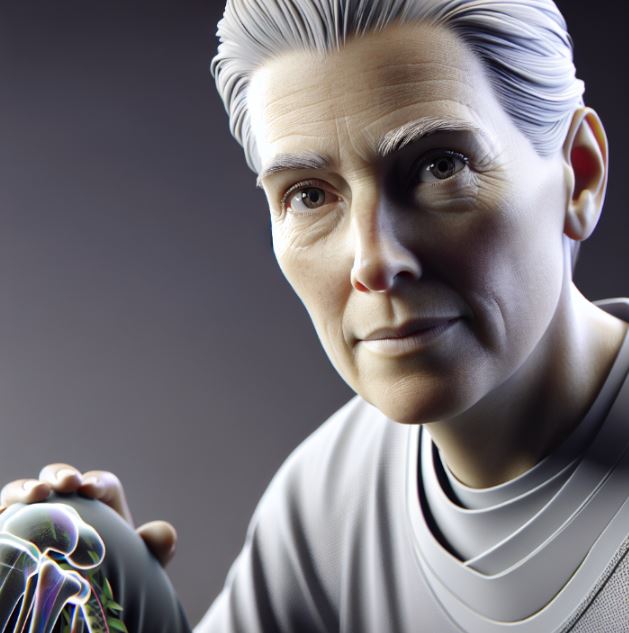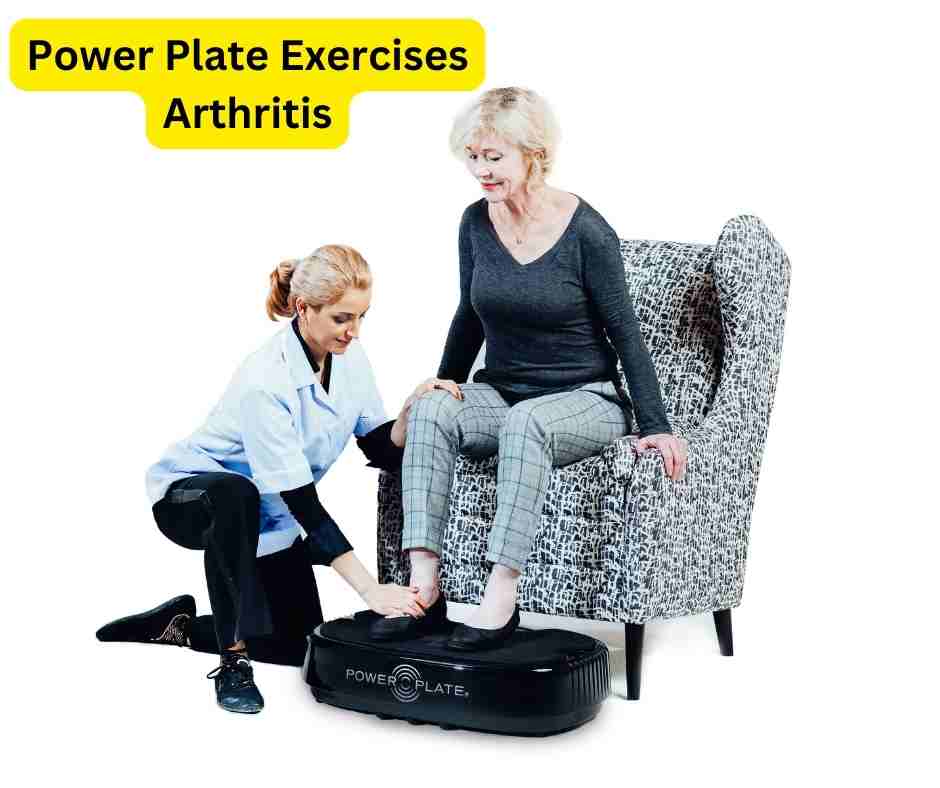Power Plate exercises for arthritis Introduction.
Living with knee arthritis can be challenging, but exercise can play a crucial role in managing symptoms and improving mobility.
In this comprehensive guide, we’ll explore low-impact Power Plate exercises specifically tailored to alleviate knee arthritis discomfort.
Whether you’re a beginner or an experienced fitness enthusiast, these exercises can help you maintain an active lifestyle while minimizing stress on your joints.
Power Plate Exercises For Arthritis Table of Contents
Understanding Knee Arthritis
What is Knee Arthritis?

- Knee arthritis is a common condition characterized by inflammation and deterioration of the knee joint, leading to pain, stiffness, and decreased mobility.
- The two most common types of knee arthritis are osteoarthritis (OA) and rheumatoid arthritis (RA), each with its own set of symptoms and treatment approaches.
A Note on Rheumatoid Arthritis
Aside from its general benefits for arthritis, Power Plate exercises hold significant promise for individuals undergoing this type of physical therapy.
These low-impact exercises, coupled with the gentle vibrations of the Power Plate, provide an ideal platform for easing joint stiffness, improving range of motion, and enhancing muscle strength—all essential components of effective rheumatoid arthritis physical therapy regimens.
By incorporating Power Plate into your treatment plan, you can amplify the benefits of physical therapy and make strides towards managing rheumatoid arthritis symptoms more effectively.
How Does Knee Arthritis Impact Exercise?
- Knee arthritis can make traditional high-impact exercises challenging due to increased joint pain and stiffness.
- Low-impact exercises are often recommended for individuals with knee arthritis as they help reduce stress on the joints while still providing the benefits of physical activity.
Introduction to Power Plate
What is Power Plate?
- Power Plate is a cutting-edge fitness technology that utilizes vibration to stimulate muscles, enhance circulation, and improve flexibility.
- It offers a low-impact alternative to traditional exercise, making it suitable for individuals with knee arthritis who may struggle with high-impact activities.
Benefits Power Plate Exercises for Arthritis
- Power Plate can help individuals with knee arthritis improve muscle strength, joint stability, and overall mobility without exacerbating joint pain.
- Its gentle vibrations promote blood flow to the affected area, reducing inflammation and supporting joint health.
Power Plate Exercises for Arthritis
1. Squats
- Description: Perform squats on the Power Plate platform, focusing on proper form and controlled movement to strengthen the muscles around the knees.
- Benefits: Squats help improve lower body strength and stability, supporting the knee joint and reducing arthritis symptoms.
2. Lunges
- Description: Perform forward or side lunges on the Power Plate, emphasizing balance and stability while targeting the quadriceps, hamstrings, and glutes.
- Benefits: Lunges help improve lower body strength and flexibility, enhancing overall knee function and reducing arthritis discomfort.
3. Calf Raises
- Description: Stand on the Power Plate with feet hip-width apart and raise onto the balls of your feet, then lower back down with control.
- Benefits: Calf raises strengthen the muscles of the lower leg, providing support and stability to the knee joint while minimizing impact.
4. Bridge Pose
- Description: Lie on your back with knees bent and feet flat on the Power Plate, then lift your hips towards the ceiling while engaging your glutes and core.
- Benefits: Bridge pose targets the glutes, hamstrings, and lower back, promoting hip and knee stability while improving overall posture.
Low Impact Power Plate Exercises for Knee Arthritis FAQs
Are Power Plate exercises safe for individuals with knee arthritis?
Yes, Power Plate exercises are generally safe for individuals with knee arthritis as they provide a low-impact alternative to traditional exercise, minimizing stress on the joints while still providing the benefits of physical activity.
How often should I perform Power Plate exercises for knee arthritis?
It’s recommended to start with 2-3 sessions per week and gradually increase frequency and intensity as tolerated.
Listen to your body and adjust accordingly to avoid overexertion.
Can Power Plate exercises help reduce knee arthritis symptoms?
Yes, Power Plate exercises can help improve muscle strength, joint stability, and overall mobility, which may lead to a reduction in knee arthritis symptoms over time.
However, it’s essential to consult with a healthcare professional before starting any new exercise regimen.
Is Power Plate good for arthritis?
Power Plate vibration platforms can be beneficial for individuals with arthritis.
The gentle vibrations help stimulate blood flow, reduce inflammation, and improve joint mobility, which may alleviate arthritis symptoms.
However, it’s essential to consult with a healthcare professional before starting any new exercise regimen, especially if you have arthritis, to ensure it’s safe and suitable for your specific condition.
Does a vibration plate help with inflammation?
Yes, vibration plates can help with inflammation.
The vibrations stimulate blood flow, which promotes circulation and helps reduce inflammation in muscles and joints.
This increased blood flow also aids in delivering essential nutrients and oxygen to the affected areas, further supporting the body’s natural healing process.
Regular use of a vibration plate may contribute to decreased inflammation and improved overall well-being.
Does a vibration plate help with pain?
Yes, vibration plates can help alleviate pain.
The vibrations stimulate blood flow, which promotes circulation and delivers nutrients and oxygen to muscles and joints, helping to relieve discomfort.
Additionally, the gentle oscillations may help to block pain signals, providing temporary relief from various types of pain, including muscle soreness, joint discomfort, and chronic pain conditions.
However, it’s essential to consult with a healthcare professional to determine if using a vibration plate is suitable for managing your specific pain condition.
Do vibration plates really help with bone density?
Yes, research suggests that vibration plates can help improve bone density.
The mechanical vibrations generated by the plate stimulate bone cells, encouraging bone remodeling and potentially increasing bone density over time.
This effect is particularly beneficial for individuals at risk of osteoporosis or those looking to maintain bone health.
However, it’s essential to use vibration plates under the guidance of a healthcare professional and in conjunction with other bone-strengthening activities for optimal results.
Conclusion:
Incorporating low-impact Power Plate exercises for arthritis into your routine can be an effective way to manage knee arthritis symptoms and improve overall joint health.
By focusing on strengthening and stabilizing the muscles surrounding the knee joint, you can support better mobility and enjoy a more active lifestyle. Remember to start slowly, listen to your body, and consult with a healthcare professional if you have any concerns or questions about exercising with knee arthritis.
Disclaimer
Some of the links on this website are affiliate links, meaning that we may earn a commission if you click on the link and make a purchase.
This helps support the creation of free content on this website.
However, our primary goal is to provide you with valuable information and recommendations, regardless of any affiliate relationship.
My opinions and recommendations are based on my honest assessment of the product or service in question.

